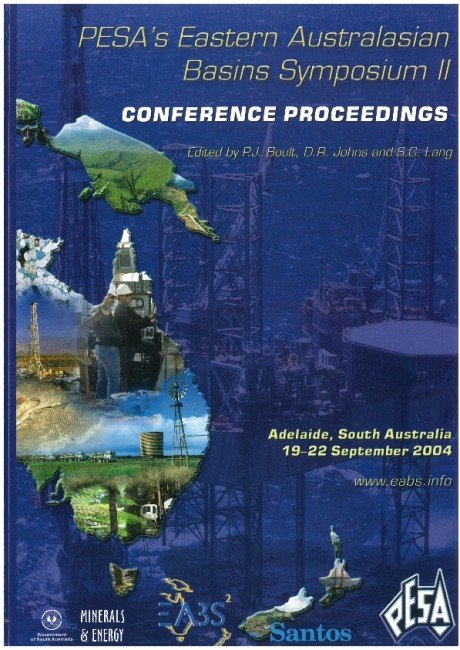Publication Name: PESA's Eastern Australasian Basin Symposium II
Authors: P.F. Green, P.V. Crowhurst and I.R. Duddy
Date Published: December 2004
Number of Pages: 32
Reference Type: Book Section
Abstract:
Apatite fission track analysis and vitrinite reflectance studies of the Otway Basin (Southeastern Australia) have revealed numerous mid-Cretaceous, mid-Tertiary and Late Tertiary tectono-thermal events, reflecting both temporal variation in basal heat flow and episodes of deeper burial and subsequent exhumation. In particular, results from the Anglesea-1 well reveal two dominant paleo-thermal episodes with cooling beginning from maximum paleotemperatures in the mid-Cretaceous and from a lower paleo-thermal peak in the Tertiary. The timing of this more recent cooling episode is relatively poorly defined, due to a combination of factors including the virtual absence of the more sensitive fluorinerich apatites in samples from Early Cretaceous Otway Group volcanogenic sediments.The unique low temperature sensitivity of apatite (U-Th)/He dating offers the potential to define the timing of this more recent cooling episode with greater precision. Using a thermal history framework provided by AFTA and VR data, comparison of modelled (U-Th)/He ages for a range of viable scenarios with measured ages allows refinement of the onset of Late Tertiary cooling to the interval 12-7 Ma. This timing correlates closely with a regional Late Miocene unconformity, long recognised but recently documented in some detail.
Integration of (U-Th)/He dating with AFTA and VR provides increased precision in the timing of low temperature
paleo-thermal episodes, and in resulting thermal history reconstructions, in turn allowing improved definition of the thermal evolution of potential hydrocarbon source rocks. Application of these techniques can significantly reduce exploration risk by focussing on regions where hydrocarbon generation post-dates structuring.


